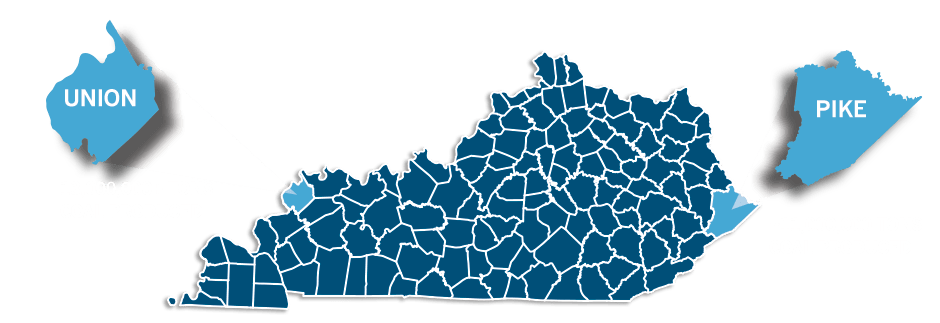by Art Shechet
After a century of a coal economy and its exploitation of natural resources and human capital, Eastern Kentucky is looking for its future. Any future. An eminent group of the same old, same olds has been charged with leading the efforts to find Eastern Kentucky’s future. Right. The economic devastation and depopulation of Eastern Kentucky due, in large part, to the decline of King Coal is a very big story that impacts us in our little Eden of Central Kentucky.

Annual Coal Production (million tons) (Kentucky Energy and Environment Cabinet)
| Year | Eastern Kentucky | Western Kentucky | Total |
| 2003 | 91.3 | 21.5 | 112.8 |
| 2004 | 90.9 | 23.4 | 114.3 |
| 2005 | 93.3 | 26.4 | 119.7 |
| 2006 | 93.6 | 27.2 | 120.8 |
| 2007 | 87.1 | 28.2 | 115.3 |
| 2008 | 90.3 | 30.1 | 120.4 |
| 2009 | 74.9 | 32.9 | 107.8 |
| 2010 | 68.2 | 36.9 | 105.1 |
| 2011 | 67.9 | 41.0 | 108.9 |
| 2012 | 49.2 | 42.0 | 101.2 |
| 2013 | 39.8 | 40.8 | 80.6 |
Eastern Kentucky Coal Field Total Production (tons) is DECREASING
Eastern Kentucky has experienced precipitous declines in coal mine employment over the past couple of years, whereas employment in mines in Western Kentucky has been essentially stable (Kentucky Energy and Environment Cabinet). The story of the “War on Coal “is largely the story of the tapping out of the Eastern Kentucky coalfields due to many factors. And it is also surely the story of decades of failure to plan for this inevitable day.
See what the CEO of Peabody Energy had to say in this excerpt from a recent article in the Wall Street Journal (WSJ, January 7, 2014)
Coal companies say Appalachian coal has become too expensive to mine. Ten years ago, Peabody Energy, the nation’s largest coal producer, decided to move west and overseas. “It all comes down to geology,” says Chief Executive Greg Boyce. “You’ve got a district [in the East] that’s been mined for 100, 120 years; conditions were difficult.”
Average Number of Employees at Coal Mines in the United States, by Primary Activity, 1979-1988
From 1979 to 1988 employment dropped very substantially, due to many factors including advances in mining technology and equipment. Reagan certainly could not be accused of a war on coal. To put a fine point on it, this question shows how data can be twisted and turned to serve any purpose if not analyzed closely and understood.
| Year | Underground Mines | Surface Mines | |||||||||||||||
| Underground | Surf at UG | Total | Strip | Auger | Culm Bank | Dredge | Total | ||||||||||
| 1979 | 132,928 | 15,997 | 148,925 | 73,244 | 636 | 362 | 44 | 74,286 | |||||||||
| 1980 | 127,169 | 15,480 | 142,649 | 70,776 | 584 | 360 | 70 | 71,790 | |||||||||
| 1981 | 121,702 | 15,603 | 137,305 | 72,062 | 793 | 342 | 120 | 73,317 | |||||||||
| 1982 | 118,760 | 14,115 | 132,875 | 69,972 | 597 | 409 | 111 | 71,089 | |||||||||
| 1983 | 89,803 | 11,681 | 101,484 | 63,306 | 592 | 363 | 114 | 64,375 | |||||||||
| 1984 | 93,554 | 11,823 | 105,377 | 67,622 | 563 | 368 | 120 | 68,673 | |||||||||
| 1985 | 89,073 | 11,959 | 101,012 | 62,516 | 628 | 382 | 126 | 63,652 | |||||||||
| 1986 | 82,643 | 11,513 | 94,156 | 59,404 | 611 | 479 | 109 | 60,603 | |||||||||
| 1987 | 75,297 | 10,502 | 85,799 | 56,886 | 884 | 516 | 169 | 58,455 | |||||||||
| 1988 | 71,775 | 10,194 | 81,969 | 54,753 | 910 | 486 | 186 | 56,335 | |||||||||
Source: Kentucky Geological Survey

